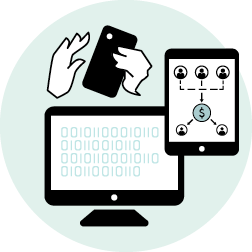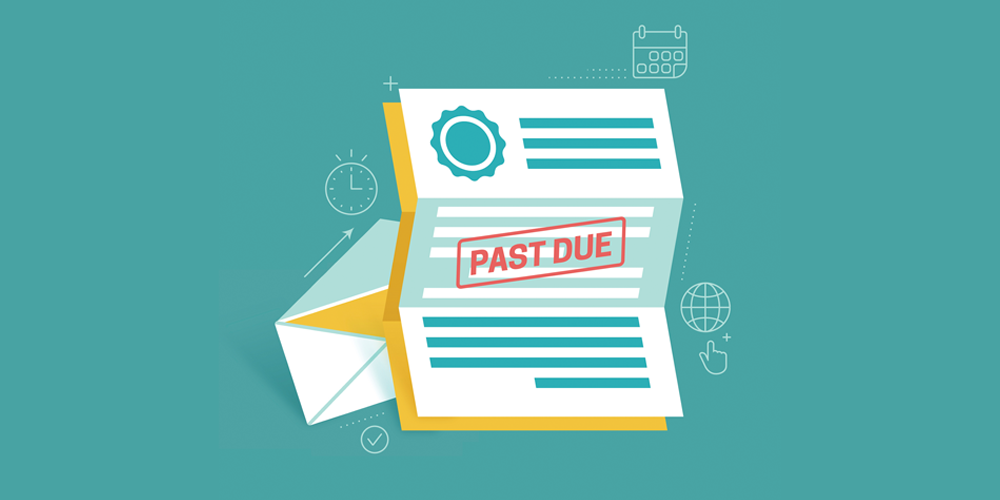Search the phrase “late payments” on the internet and you’ll find metaphor after metaphor describing the importance of cash flow to a business, including these:
- Cash flow is at the heart of any business. (supplychaindive.com)
- As most business owners and CFOs know, cash flow is the life blood of a business. (lovetts.co.uk)
- Cash flow is the oxygen of their business. (USA Today)
Whether it’s the heart, blood, oxygen, or otherwise, cash flow is critical to the health of a business, as the metaphors say. And very little impacts cash flow more than the money a business receives for its goods and services. Sure, other issues affect cash in the bank – underbudgeting, overspending, taxes, unexpected expenditures – but if money isn’t coming in for products delivered or services rendered, you can be sure that money won’t be going out.
Unfortunately, cash flow issues caused by late payment have been significant for SMEs for the past decade. The average U.S. small business has more than $50,000 in outstanding receivables at any given time.1 However, while it’s a stretch to say that SMEs can eliminate the problem, better invoicing processes and tools can help them take back some control over the issue.
Fatal to SMEs
According to American Express, delaying payment of invoices didn’t become prevalent until the 2008 financial crisis, when companies (larger ones in particular) began extending payment terms. Even though the recession is long past, the practice remains common. Nearly a third of businesses say it takes longer than 30 days to receive invoice payments.
Of course, as with so many things, the global pandemic hasn’t helped matters. 43% of companies reported a rise in the number of late payments in 2020, according to the PYMNTS Disbursements Tracker from October 2020. By the end of the year, a significant share of companies that typically paid their bills in 30 to 45 days were settling them in two and sometimes as many as three to four months, a recent USA Today article said.
Lengthy payment delays can be fatal for many small and mid-size businesses. Their smaller size means SMEs have difficulty absorbing cash flow issues caused by late payments and lack the clout to negotiate with larger customers that owe them money.
Death by a Thousand Cuts
Slow payment and cash flow issues can cause death (or at least injury) by a thousand cuts whether economic times are good or bad. Many SMEs work through those issues time and time again, but at a price: slow invoice payment has a significant effect on their ability to thrive and grow.
Late payments lead to cuts or delays in such key expenditures as equipment and marketing. That means businesses can’t adequately promote their products and services or make the kind of investments that might attract additional customers. U.S. SMEs lost just over $43,000, on average, when they had to turn down projects due to inadequate cash flow.1
They result in hiring freezes. Nearly a quarter of American SMEs stop hiring when cash flow is slow. If all small businesses were paid for all of their unpaid invoices, they ultimately could hire 2.1 million employees, according to Fundbox.com, which offers access to business credit for small organizations.
They make it difficult for small business owners to earn a living. 79% of small business owners choose to cut their own pay, rather than lay off employees or cut employee pay, when customer payments are slow.
And, finally, late payments mean that SMEs become part of the payment problem themselves. Cash flow problems prevent 32% of SMEs from paying their own vendors, paying off loans, or writing paychecks on time.1 Among those who have had cash flow issues, 43% of small business owners frequently have been at risk of not being able to pay their employees by payday.
In the end, late payments hurt a business’s relationships with suppliers, banks, and employees. One-third of small firms that have missed a payment deadline have subsequently had goods or services withheld from them, American Express says. And good luck to any business that starts delaying employee paychecks.
To Survive, Make Invoicing Faster and Easier
So what to do about late payments? You can take on short-term debt as a stop gap, use accounts receivable as collateral for invoice factoring, reduce your operations – or just turn your back on them, as many organizations do. Those options, however, can be expensive, frustrating, and ultimately unproductive. Let’s take a look at some of the more practical steps businesses can take.
One way to take greater control of the problem is to invoice customers faster. The issue of late payments persists in part because SMEs can be slow to bill, sending invoices days or weeks (or more!) after the fact. More than half of small businesses globally (53%) bill customers on a fixed, specific date, compared to 47% that use advanced invoice planning – charging customers when they receive goods and services, or even before.1
The sooner the customer receives the invoice, the sooner they will remember the purchase, raise and resolve any concerns, and pay or schedule payment. Freshbooks research also indicates that including shorter payment terms also means merchants get their money faster.
Another way is to make invoicing for payment easier. Embedded payment solutions for both AR and AP are becoming an integral element of B2B payments. Invoicing and payments that are integrated within software solutions result in an easier, faster, and less expensive payments process for employees and customers.
Embedded payments also make it simple for businesses to select cards on file and make returning customers’ payment experiences more convenient. They also facilitate recurring and automated payments, such as subscriptions and memberships, creating a reliable revenue stream.
And a final way to discourage late payments is to expand payment options. Credit and debit cards have long been a staple of retail payment methods. More and more businesses now consider cards an attractive payment method to help them manage their own cash flow constraints. But some businesses still want to pay from their company bank account, while also recognizing the safety, security and operational need for electronic payments.
ACH as a payment option is fast displacing the paper check, which can be expensive and operationally risky — not to mention slow to arrive at its destination. Payment card and ACH account data can be stored for convenience of returning customers and can also be set up for automated billing, nearly guaranteeing timely payment of invoices.
In 2020, U.S. business closures were up roughly 200,000 over historical levels, according to the Federal Reserve. While the challenges of 2020 were a major factor for many business failures, certainly the cascading effect of late payments didn’t help. When one suffering business can’t pay another, both ultimately may lose. If cash flow is the heart (life blood, oxygen) of any business, reducing late payment issues is one important way to ensure that it survives.
Looking to transform your invoicing process? Coming soon to MerchantE is MerchantE Invoice, a tool to help you streamline the payment process and get paid faster. Learn more about this exciting new feature today!

1 Intuit’s 2019 State of Cash Flow



